Physical Address
304 North Cardinal St.
Dorchester Center, MA 02124
Physical Address
304 North Cardinal St.
Dorchester Center, MA 02124
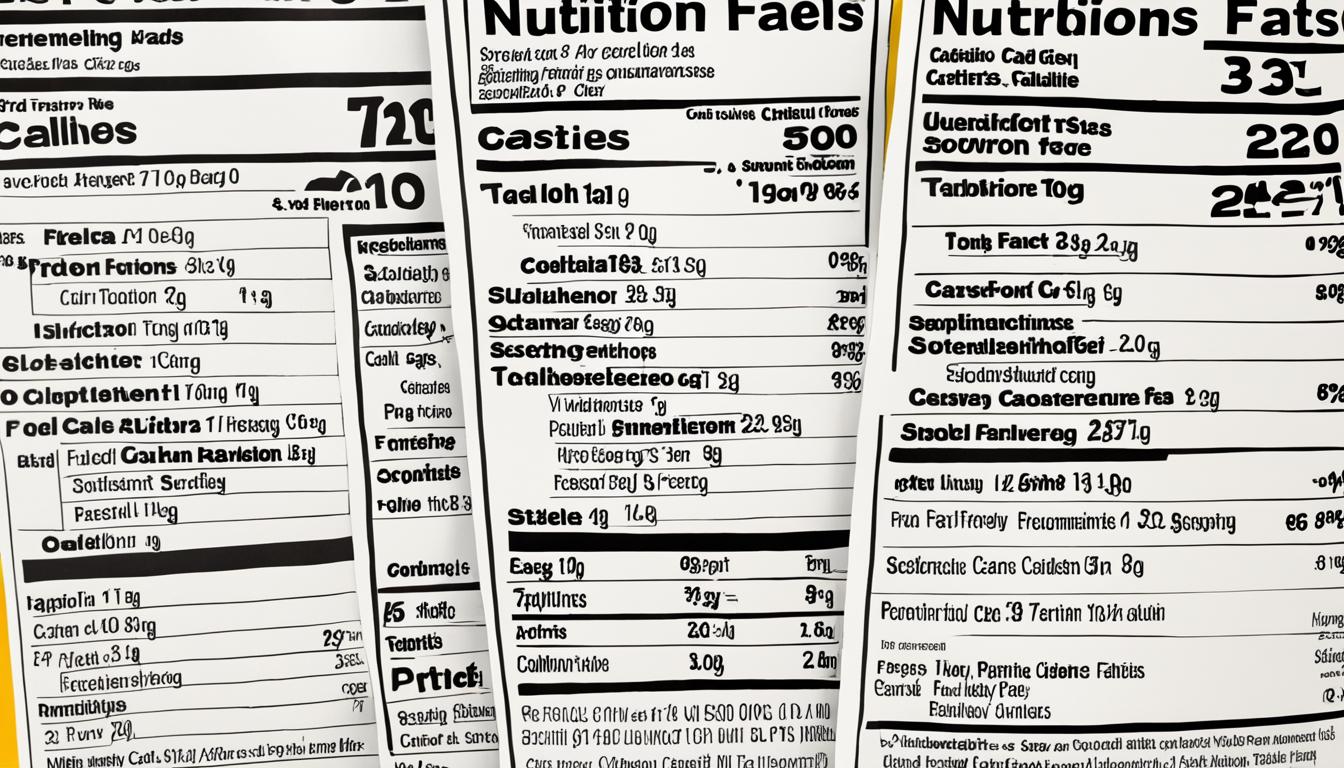
Learning how to read nutrition labels is key to making healthier food choices. Understand serving sizes, calories, nutrients, and ingredients to eat smarter.
The Nutrition Facts label is put on packaged foods and drinks by the U.S. Food and Drug Administration (FDA). It’s there to help us choose foods that are better for our health. By learning how to read and understand these labels, you can pick foods that match your diet and health needs. This guide will show you how to make sense of the Nutrition Facts label. It covers serving size, calorie count, macronutrients to watch, micronutrients you need, and the percent daily values. With this knowledge, you’ll be able to make wiser food choices and improve your diet.
The Nutrition Facts label gives important info about food or drink products. It’s made by the U.S. Food and Drug Administration (FDA) to guide consumers. It shows nutrition facts, calories, and nutrient information in a standard way. This helps people choose healthier options when buying packaged items.
The main parts of a Nutrition Facts label are:
Knowing the serving size and servings per container is key. It helps understand the nutrient and calorie info. The serving size is what most people eat at one time. Remember, the label provides info per serving. If you have more than one serving, you must adjust the numbers.
Learning about Nutrition Facts labels helps people choose healthier foods and drinks.
On the Nutrition Facts label, the serving size and servings per container are key. They show the amount usually eaten at once, not what you should eat. Knowing how much is in a package lets you understand the nutrition and calories in each serving. For total intake, you might need to do some math if you eat more than one serving.
Let’s say a frozen lasagna label lists 1 cup as a serving size, with 280 calories. Eating two servings means you double the amount of nutrients, calories, and % Daily Values.
| Nutrient | 1 Serving (1 cup) | 2 Servings (2 cups) |
|---|---|---|
| Calories | 280 | 560 |
| Total Fat | 9g | 18g |
| Saturated Fat | 4.5g | 9g |
| Sodium | 850mg | 1700mg |
| Total Carbohydrates | 34g | 68g |
| Dietary Fiber | 4g | 8g |
| Protein | 15g | 30g |
Understanding serving size and servings per container helps you shop smarter. You can pick foods or drinks that give you the right balance of nutrients, depending on how much you plan to eat or drink.
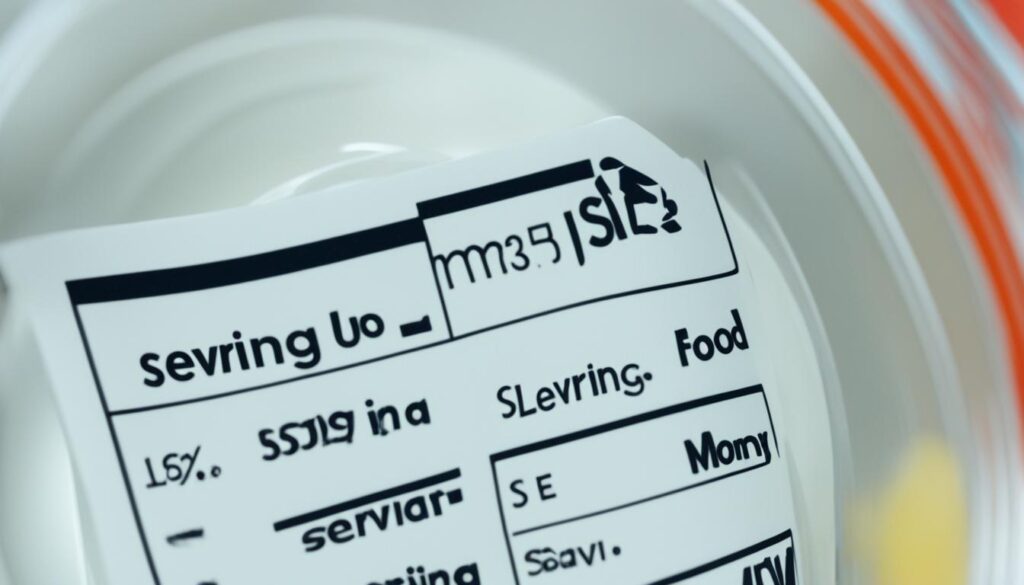
The Nutrition Facts label tells you how many calories are in each serving. It’s essential for keeping track of your calorie intake for a healthy weight. To find out your total calories from a product, multiply the calories per serving by how much you eat.
For instance, if a piece of lasagna has 280 calories, eating two pieces means you’ll eat 560 calories. Being mindful of serving sizes and calorie intake helps you stay on track with your health goals.
The label suggests 2,000 calories a day for general advice. But, your specific calorie needs depend on things like your age, gender, and how active you are. By understanding the calorie information and calculating your calorie requirements, you can make better choices for your health.
The Nutrition Facts label shows how much of certain macronutrients are in our food. This includes saturated fat, sodium, and added sugars. Health experts say we should watch how much of these we eat. Too much can lead to heart disease, high blood pressure, and obesity.
By looking at the label, we can see how many of these nutrients are in a single serving. And we can compare them to our daily needs. This helps us choose food that’s lower in these nutrients. It’s a good way to keep our intake in check and stay healthy.
For example, a serving of frozen lasagna has 4.5g of saturated fat. That’s 23% of what we should have in a day. Eat two servings, and you get 9g. This is a lot for just one meal. Too much saturated fat can harm our heart. So, choosing foods with less is better.
Now let’s talk about sodium. A serving of lasagna has 850mg. That’s 37% of what we need daily. Eating two servings jumps this to 1700mg. This is more than the recommended 2300mg a day. High sodium is bad for our health, raising the risk of high blood pressure and stroke. Choosing low-sodium foods is a smart move to take care of yourself.
Two servings of lasagna give you 12g of total sugars. Some of these are natural, but added sugars are the ones to watch out for. They can lead to weight gain and health issues. It’s crucial to limit these sugars. Choosing products with less added sugar is a step toward a healthier diet.
When we look at food labels, besides watching what we eat, it’s good to focus on certain micronutrients. These include dietary fiber, vitamin D, calcium, iron, and potassium. Health experts say these are key for many bodily functions and cutting the risk of some diseases.
Eating enough dietary fiber is great for your gut and heart. Foods high in fiber make you feel full, helping with weight. They also lower bad cholesterol and keep blood sugar even.
Vitamin D is essential for strong bones and teeth because it helps the body use calcium. It boosts the immune system and might lower risks of heart problems and certain cancers. Sadly, many Americans don’t get enough vitamin D.
Building strong bones and teeth, calcium is a must. It works with your muscles, nerves, and blood too. Getting enough calcium, especially with vitamin D, prevents issues like osteoporosis.
Iron is crucial for making blood that carries oxygen. It’s extra important for women who have periods because they can lose more iron. Not enough can lead to anemia.
Potassium keeps blood pressure and fluids in check. It helps muscles and nerves work well. More potassium and less sodium is good for your heart and to avoid a stroke.
Eat foods rich in these micronutrients to ensure your daily nutrition is on point. This helps you be healthier overall.
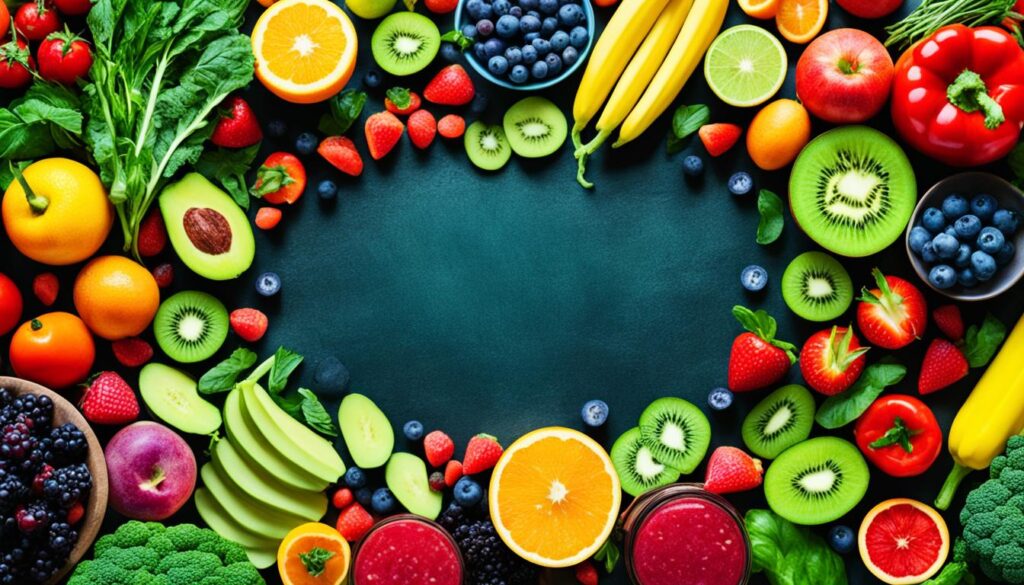
The %DV on the Nutrition Facts label helps us know how much of a nutrient we’re getting. It shows what portion of a day’s worth of that nutrient is in one serving. For example, a food with 5% DV of a nutrient is quite low, but one with 20% DV is high.
The %DV lets people see which products are nutrient-packed and which to eat in moderation. For instance, it shows if a food has a lot of good stuff but too much of things like fat and sugar. This way, shoppers can pick foods that help them meet their health goals.
Understanding %DV makes it easy for shoppers to compare products. They can know which ones are full of good nutrients like fiber or vitamin D. At the same time, they can watch out for nutrient types they should eat less of, like excessive sodium or sugar.
%DV also makes it straightforward to check if a product’s claims are true, like “low sodium” or “high fiber.” This way, shoppers aren’t tricked by ads. They focus on the real nutritional value when they buy.
The Daily Values (DVs) are recommended amounts of nutrients for a 2,000-calorie diet on the Nutrition Facts labels. They are set by the FDA. The point is to make it easier for people to see how much nutrients food has. This way, people can work on eating a balanced diet.
People should look at the %DV and other healthy eating advice, like the Dietary Guidelines for Americans. By using these, people can pick foods that help reach their health goals. It’s all about making smart choices when you eat and drink.
| Nutrient | Daily Value (DV) |
|---|---|
| Added Sugars | 50g |
| Calcium | 1300mg |
| Saturated Fat | Under 20g |
| Sodium | 2300mg |
| Dietary Fiber | 28g |
| Protein | 50g |
| Vitamin C | 90mg |
| Iron | 18mg |
| Potassium | 4700mg |
Using the daily values and other tips found on Nutrition Facts helps people choose healthier. They can better understand what’s good for them with these tools.
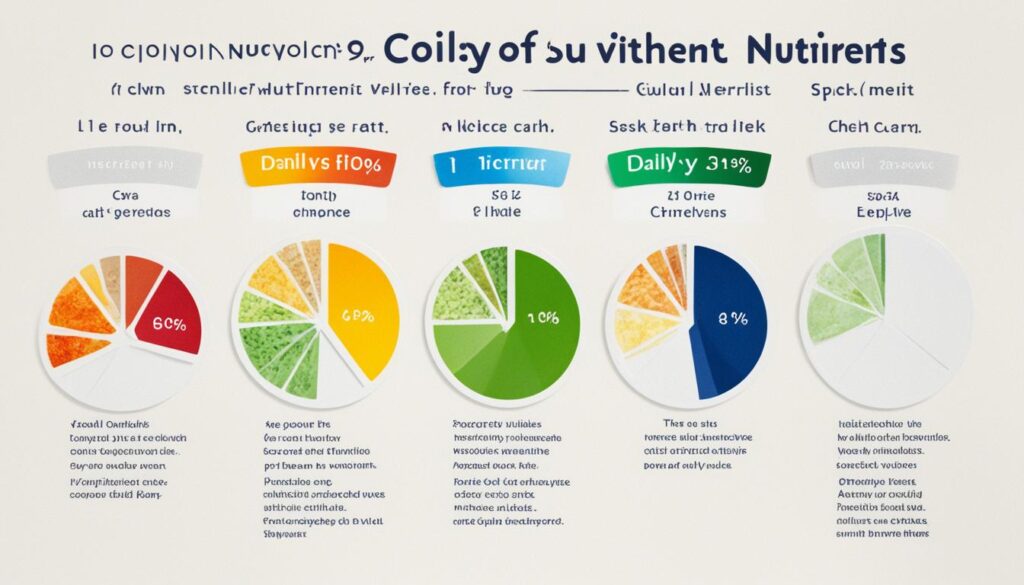
There’s more to food labels than the Nutrition Facts part. Other details on a package or bottle help people buy wisely. Learning what these labels mean is key to eating better.
Sometimes, you’ll see dates like “sell by” or “best if used by.” These dates are for top quality, not for safety. Always check how the food looks and smells before deciding if it’s still good to eat.
The ingredient list shows what’s in the product, from most to least. Look for things you might be allergic to or don’t want to eat. This helps you pick foods that match what you need and want.
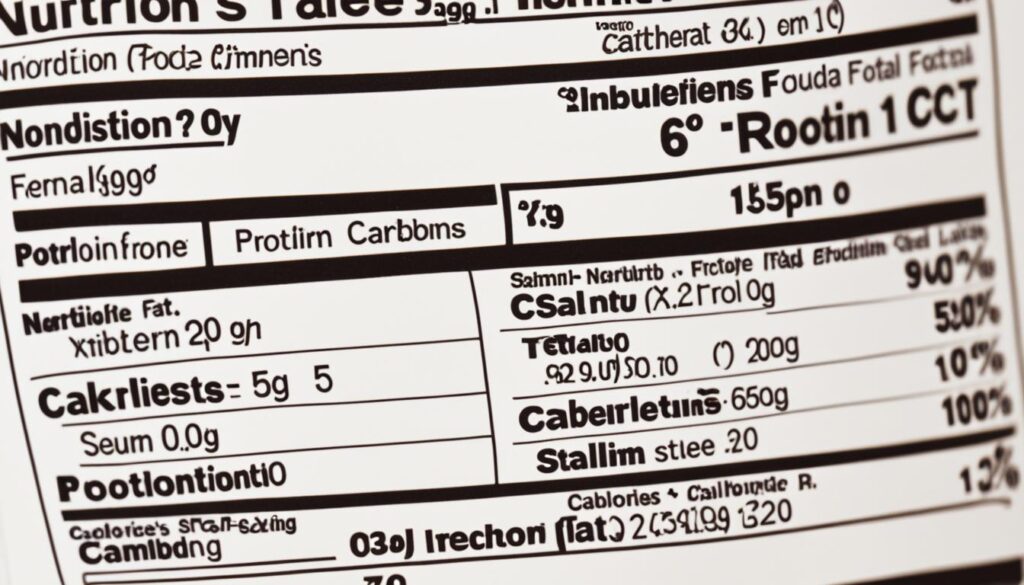
Food packages are full of terms that might trick us into thinking a product is healthier than it really is. Understanding what common labels like “light” or “organic” mean is key. For instance, a “light” product could only mean it has less taste or is watered down. And just because something is labeled “multigrain,” it doesn’t confirm it has whole grains.
Knowing these facts helps us see through the marketing. It lets us pick foods that match our real health goals, not just what the labels suggest.
| Labeling Term | Definition and Implications |
|---|---|
| Light | Products labeled as “Light” are often processed to reduce calories or fat, potentially misleading consumers into thinking they are healthier options. |
| Low-fat | The term “Low-fat” on food labels may signify a reduction in fat content but potential addition of sugars, impacting the overall healthiness of the product. |
| Low-calorie | Foods labeled as “Low-calorie” may have fewer calories per serving, but this does not necessarily mean they are nutritionally superior to their higher-calorie counterparts. |
| Low-carb | Products marketed as “Low-carb” may have reduced carbohydrate content, but they may still be high in other nutrients to limit, such as saturated fat or sodium. |
| Multigrain | The term “Multigrain” on food labels indicates the presence of more than one type of grain, which may not necessarily mean the grains are whole grains. |
| Organic | “Organic” labels do not provide a definitive health evaluation of a product, as organic versions of sugar, for example, are still sugar. |
Being smart about reading labels means we can make choices that are good for us. This way, we don’t just go by what the labels say.
Understanding how to read nutrition labels is very important. It helps us make smart and healthier food choices. Knowing about the serving size, calories, and which nutrients are good or bad helps a lot.
It’s also key to know what common food labels mean. This way, we don’t get tricked by fancy claims. Learning these skills lets us pick foods that are good for us.
By focusing on how to read nutrition labels, we can make choices that are good for our health. This way, we work towards feeling better and living a fuller life.